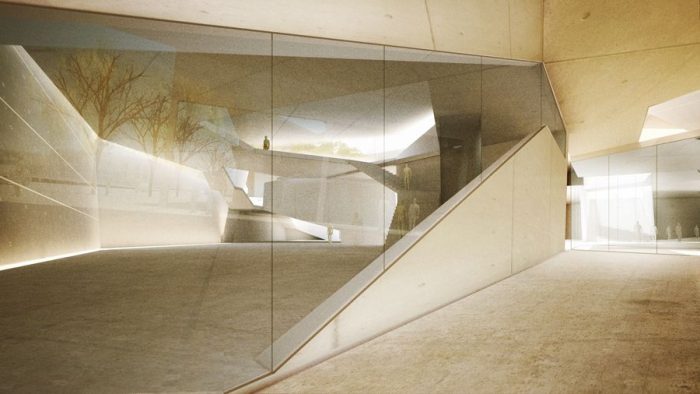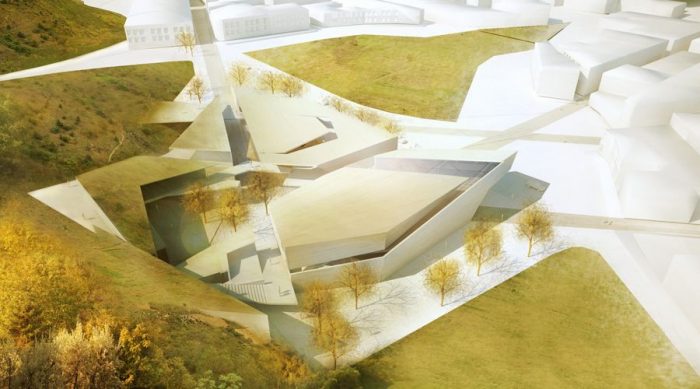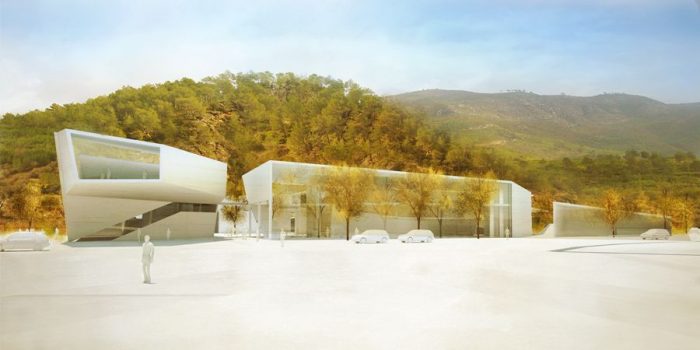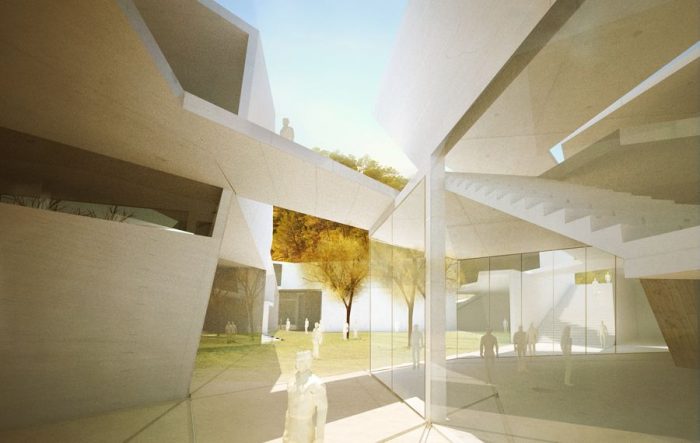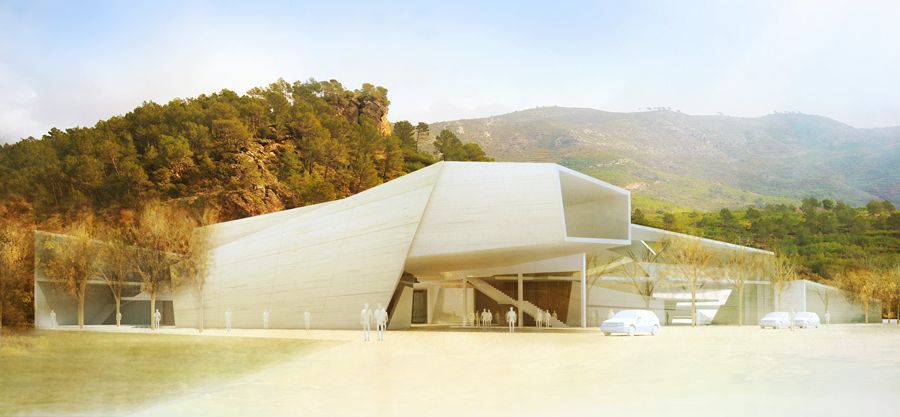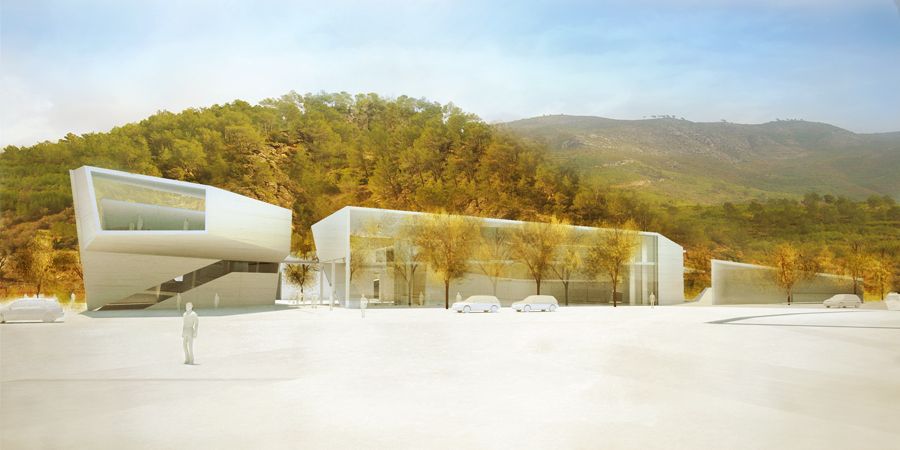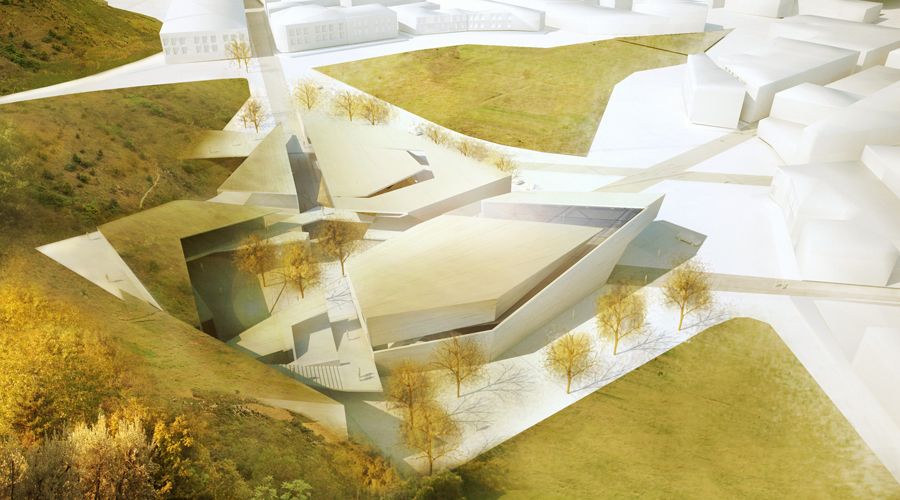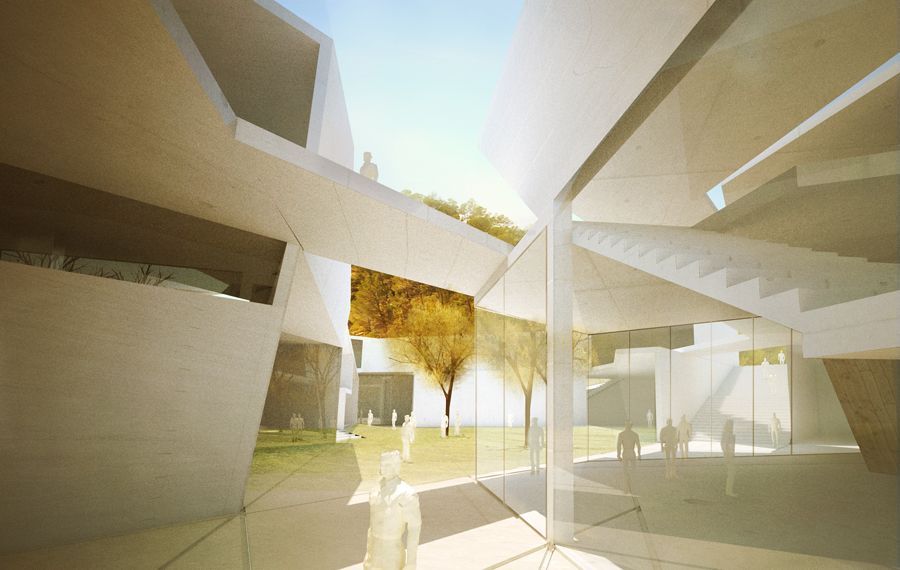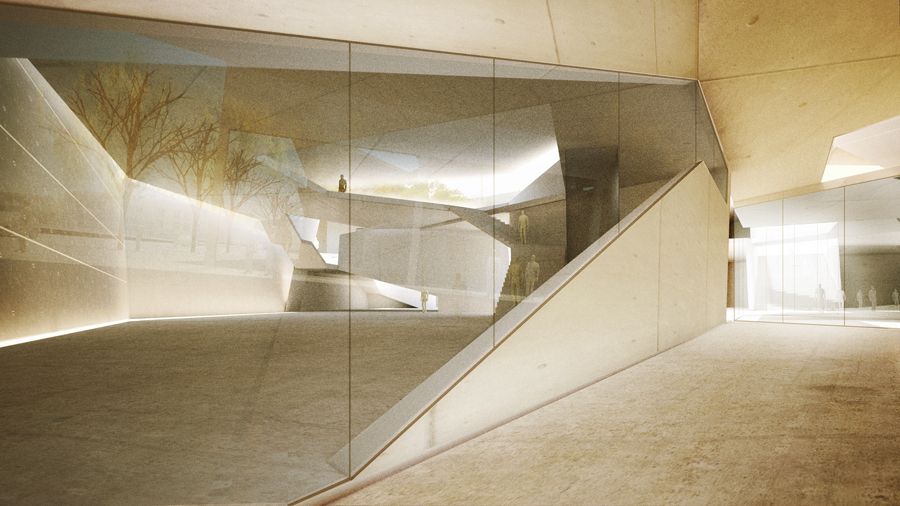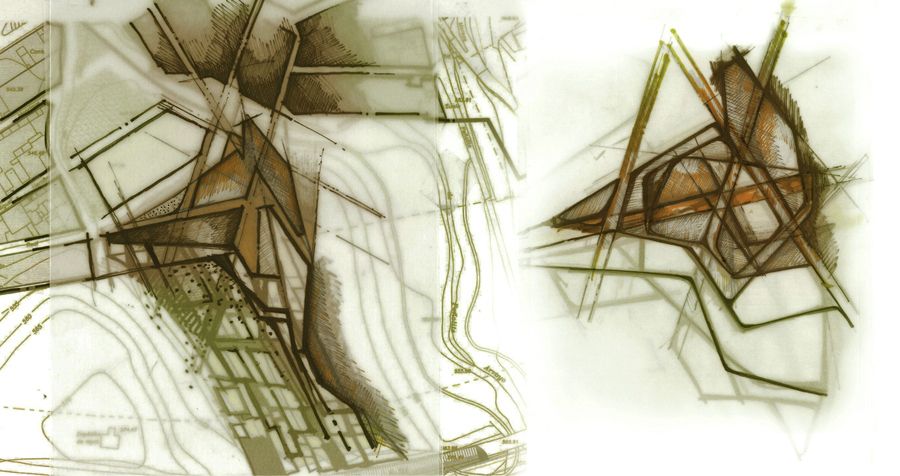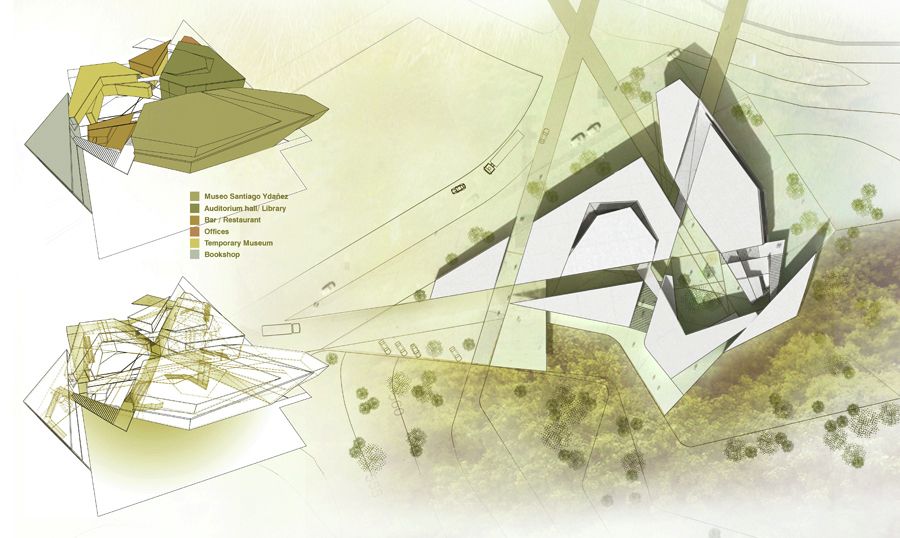It is interesting that the architects should choose jazz music as an approach point for the design of a contemporary art museum. The Museum of Contemporary Art Santiago Ydáñez, designed by Matteo Cainer Architects, seeks to be a juxtaposition between rhythm, proportion and improvisation- three elements crucial to the making of jazz music. Could it be that our contemporary music has left the track so to say? Why is it that jazz, a music which is over a hundred years old- originating (possibly) from the confrontation of black africans with european music- represents our contemporary art better than our contemporary music? Or does it? I think it does. As stated above, it has been speculated that jazz grew out of this clashing and meshing of two vastly different musical traditions. Rhythm meets melody. We live in a time that is perhaps analogous to the confrontation. Many of us remember vividly the world before the internet. Hell, I remember calling home from school on a payphone! ‘Oh ya! A payphone- where you pay someone a quarter to use their cell phone.’ No. A phone with a house that is bolted to the ground. So while we’ve been watching the world has literally become a completely different place and we’re confronted with what to do with these two worlds; one which is before our eyes and one which is burned into our collective memories.
Well. As stated above, Matteo Cainer Architects took jazz as inspiration for this contemporary art museum in Puente de Génave, Spain. The museum becomes an amalgam from a ‘dance of loose gestures’. This improvisation, this free sway of jazz works to create a ‘tense, concentrated and unexpected ensemble.’ The Monk was famously always off-time while being perfectly in-time. In this manner, the museum presents itself as a fragmented architecture. Spaces are designed with the ability and prediction of being turned around and ‘inside-out’ to continue the solo, so to speak. Paths meet to form wells of activity- an unexpected tremolo that turns into conversation.
It is amazing, one really can read a piece of jazz into this building/site. Spaced throughout the site, are nodes of public engagement with cross-axial siting and physical connections which always keep the tune flowing, preventing boredom or stagnation. As one may often find the ‘key’ to a jazz piece hinted at from the very start, the main gallery is a cantilevered mass extending out over the entrance. It seeks at once to describe its unique character while relating itself to that which came before. In this case, the city which makes up its home.
Courtesy of © Matteo Cainer Architects
Courtesy of © Matteo Cainer Architects
Courtesy of © Matteo Cainer Architects
Courtesy of © Matteo Cainer Architects
Courtesy of © Matteo Cainer Architects
sketch
site plan


